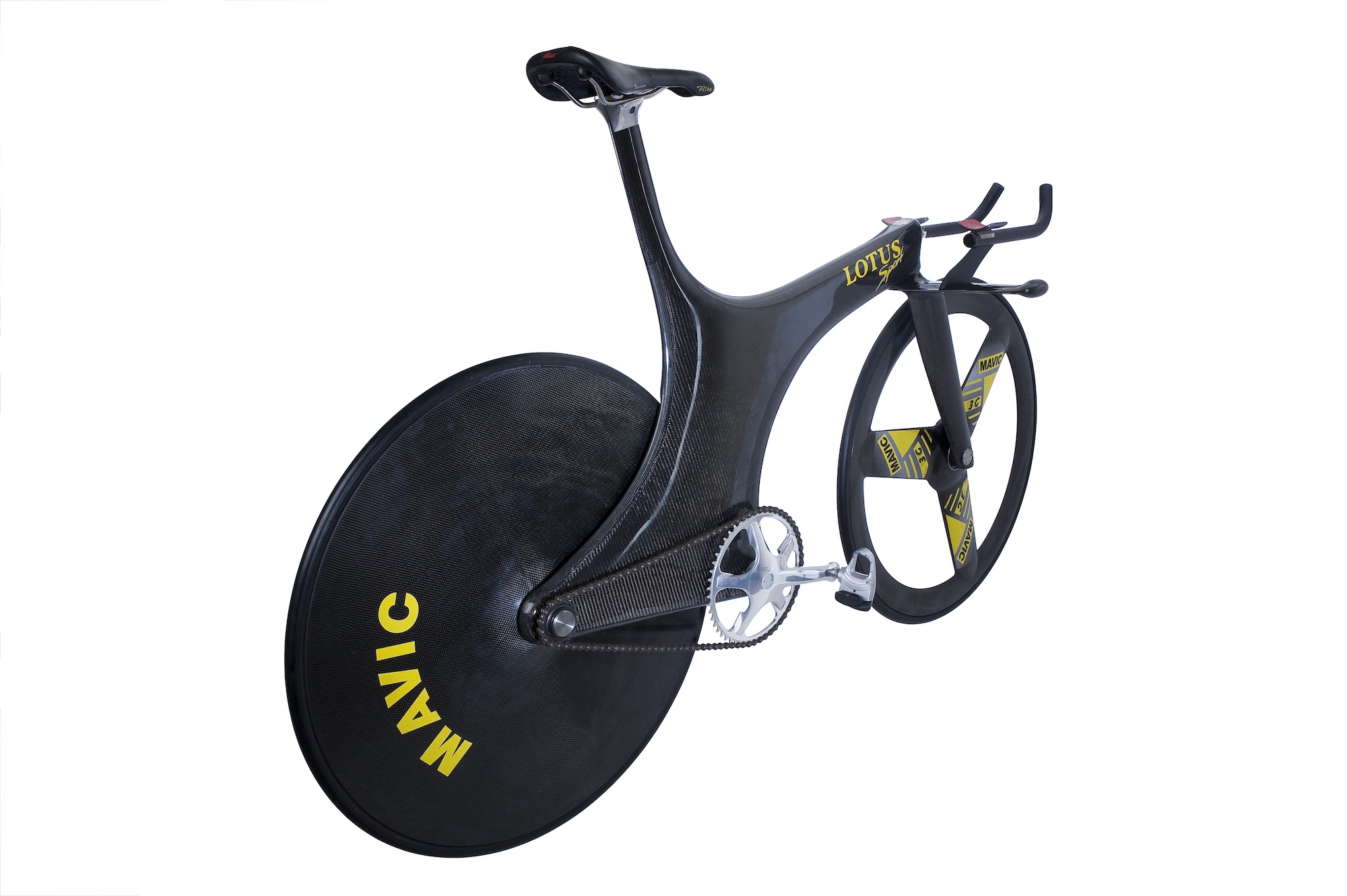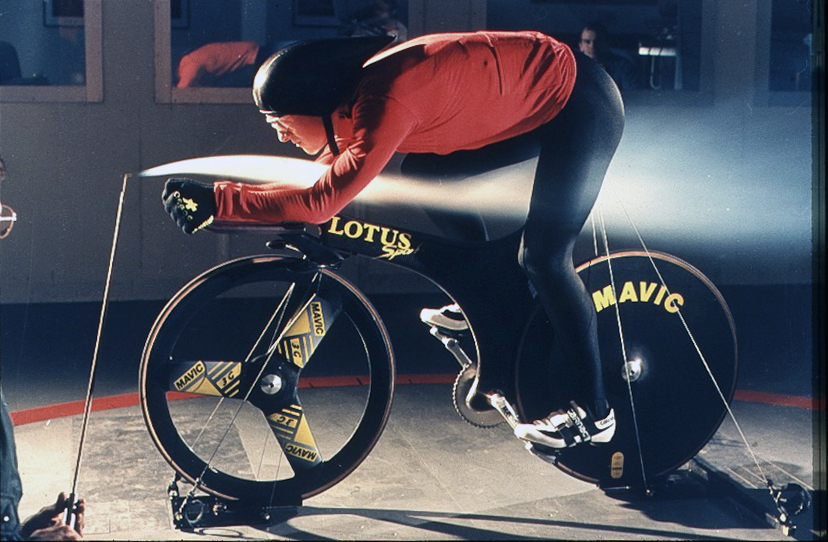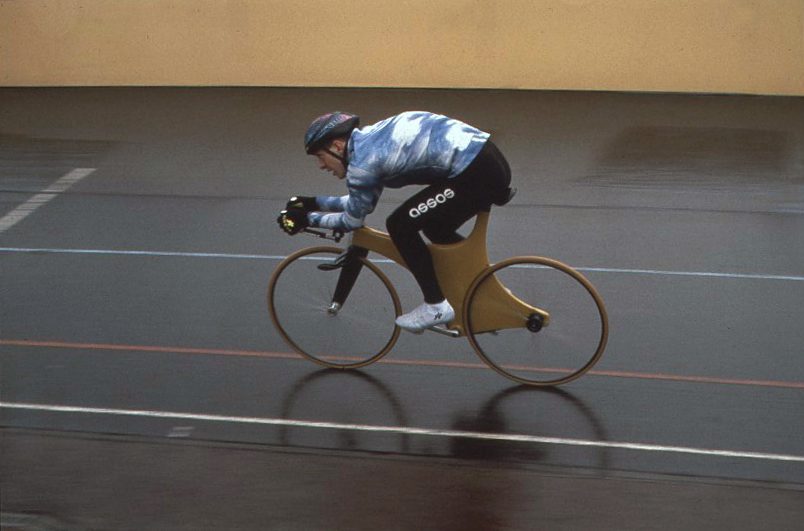When Hope Technology and Lotus Engineering ripped the cover off the Olympic-ready HB.T in 2019, nobody had ever seen a bike like it. Sure, in side profile, it looked fairly conventional. However, if you leaned in for a close look at the 3D printed titanium elements or simply got in front of it, the bike stood out wildly.
But if you didn’t know already, its predecessor exhibited a singularity on the level of a unicorn.
That bike, the Lotus Type 108, attained legend status during its highly performative run. And now, a coincidental anniversary draws the unprecedented design right back into the spotlight.
Today is the opening ceremony of the Commonwealth Games in Birmingham, England. More than 5,000 athletes representing 72 nations will compete in 19 sports and 280 medal events in the city in the following weeks.
And it just so happens the track cycling starts tomorrow. That date, July 29, marks the 30th anniversary of Team Great Britain cyclist Chris Boardman’s 1992 gold medal in the 4,000 meters. It was the country’s first cycling gold medal in cycling in seven decades, and Boardman won it by dusting the field on a Type 108.
The design catapulted to success thanks in large part to a massively burdensome engineering effort. Imaginative concept engineering followed forced contours around a tight delivery timeline. And when the team finished it and brought it to the track on schedule, skeptics abounded.
Here’s the full story of the bike that changed track cyling forever, the Lotus 108, and the mavericks and dreamers who brought it to be.
‘Skunkworks’
Richard Hill is now in his fourth decade working for Lotus. Today he’s the chief aerodynamicist for Lotus Engineering, the company’s concept development arm. Every project — on two wheels or four — passes his desk.
Hill played a vigilant role in the Type 108’s development back in the early ‘90s.
“Type 108 was made in our spare time, after-hours and on the weekend. It was the ultimate side project, a complete skunkworks operation. We were in the tool room making moulds, trying out new ideas… and also doing our day jobs as well!” He said.
The principal reason Hill and his cohort poured their spare time into the project was that they needed to finish it fast. Once they got the idea for its signature monocoque frame, confirmed they thought it would work, and sold the plan to the higher-ups at Lotus, they only had six months to complete a Type 108 from scratch.
“The Olympic regulations on bike design had changed and so there was potential for us to create something special,” Hill remembered, “but we had six months to do it.”
No money, no problems?
The team consisted of Hill, an independent bike builder from the area named Mike Burrows, and Lotus development engineer Rudy Thormann. Together, they made the board room believe in the idea.
That was good, but the Lotus C-suite didn’t deem their pitch good enough to secure one key component: money for R&D.
“We sold it to the board as a method of demonstrating our technologies and capabilities as a design and engineering consultancy, to put something on a global stage like the Olympics to help sell our services,” Hill said. “And they gave us the green light to go ahead, but it was very low level, no significant budget and everything we needed, every bit of material we wanted to buy, we had to get it signed off.”
The small team bent to the task regardless. Utilizing Hill and Thormann’s automotive knowledge and applying them to Burrows’ bike engineering experience was key. They focused primarily on how the aerodynamics of the bike affected airflow around the cyclist’s body.
“There is nothing more un-aerodynamic than spheres and cylinders — which is essentially what the human body is — riding a tubular triangulated bike frame design,” Hill explained. “And then suddenly the regulations were allowing us to create nice aero-formed profile frames.”
Wind tunnels, skeptics, and a unicorn
The final product turned out totally revolutionary in design and shape. It incorporated a single rear stay, a fork with one blade, and an aerofoiled profile frame. However, it wouldn’t succeed as a thoroughbred aero bike like the rigs that rule today’s indoor velodromes. Track cycling events at the 1992 Barcelona Olympics would run outdoors. So The Type 108’s shape also had to account for crosswinds and unpredictable drag.
They already knew Boardman would be the only rider to ever pedal the bike. That variable removed, they found it exhibited an amazing characteristic in laser-focused aero testing.
“It was a bike designed around one man, for one race, on one track. We had done a lot of wind tunnel testing, track work, and computer simulations, all looking at modeling drag and mapping out the speeds around the velodrome. We found Type 108 acted like a sail, so it goes faster when there’s a crosswind,” Hill said. “[I]f there was any form of crosswind on [race] day, we could go faster because of our design” as opposed to a conventional frame.
When the team first unveiled the rig, its first observers looked at it like it was a spaceship. Skeptical opinions rained in, creating anxiety that Hill said didn’t subside until the bike was on the track.
“We were making confident predictions about how much faster we could go, but then to see this transposed into the actual performance on the track, with Chris Boardman just obliterating record after record, was incredible,” he said.
Changing the game
In Barcelona, Boardman essentially rewrote the rule book on track cycling and redrafted the sport’s physics. His unconventional posture on the bike, arms near-horizontal and out front, sparked the media to call him “Superman.” With the entire bike designed around his body, Boardman seemed to ride it better every time he got in the saddle.
“I remember thinking at the time, what’s the end-game here? Every time he went out he was better than the time before, it was almost like he was ‘learning’ the bike,” said Hill.
In the final he caught and overtook German rider Jens Lehmann before the end of the race, and took home Britain’s first cycling gold medal in 72 years. The performance effectively set a new standard for the sport.
So Hill and his team had proved their concept, which has continued to inform Lotus Engineering in perpetuity. Superlative engineering prowess, coupled with creativity and sheer human effort, could produce results powerful enough to change the game itself.
“We developed the Lotus Type 108 with the intention of creating a demonstrator of our technical capabilities as an engineering consultancy. In the end we made history,” Hill remarked.
Legacy continues
An example of the legendary bike now occupies a place in the coterie of the world-renowned London Science Museum’s permanent collection.
But Hill didn’t stop there. For the 30 years following the Type 108’s landmark entrance, he kept working on bikes, and ultimately helped create its progenitor, the HB.T.
That bike’s stats? Pretty good, too: three golds, three silvers, and a bronze at the 2020 Tokyo Olympics, where Great Britain beat out The Netherlands and Denmark to take home the most track cycling hardware overall.
Tune in for more track action at the Commonwealth Games, starting tomorrow. If you see someone wearing the Union Jack colors on a bike that looks nothing like anyone else’s, either near or way ahead of the front of the pack, there’s a good chance you know who built it for them.





